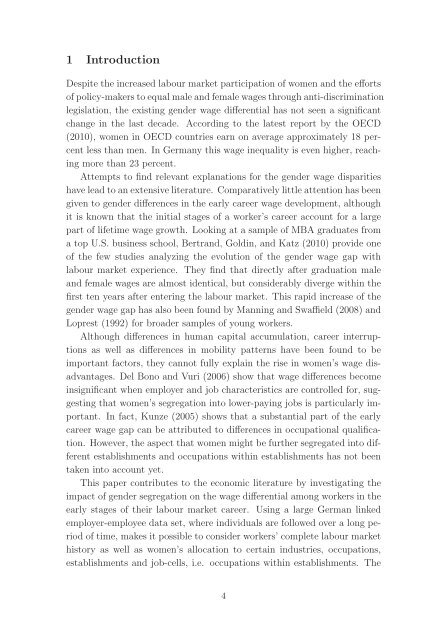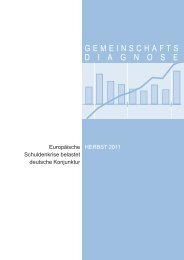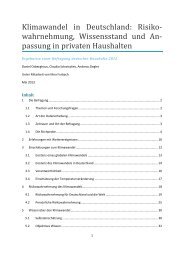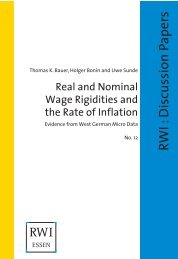Gender Segregation and Gender Wage Differences during the Early ...
Gender Segregation and Gender Wage Differences during the Early ...
Gender Segregation and Gender Wage Differences during the Early ...
You also want an ePaper? Increase the reach of your titles
YUMPU automatically turns print PDFs into web optimized ePapers that Google loves.
1 Introduction<br />
Despite <strong>the</strong> increased labour market participation of women <strong>and</strong> <strong>the</strong> efforts<br />
of policy-makers to equal male <strong>and</strong> female wages through anti-discrimination<br />
legislation, <strong>the</strong> existing gender wage differential has not seen a significant<br />
change in <strong>the</strong> last decade. According to <strong>the</strong> latest report by <strong>the</strong> OECD<br />
(2010), women in OECD countries earn on average approximately 18 percent<br />
less than men. In Germany this wage inequality is even higher, reaching<br />
more than 23 percent.<br />
Attempts to find relevant explanations for <strong>the</strong> gender wage disparities<br />
have lead to an extensive literature. Comparatively little attention has been<br />
given to gender differences in <strong>the</strong> early career wage development, although<br />
it is known that <strong>the</strong> initial stages of a worker’s career account for a large<br />
part of lifetime wage growth. Looking at a sample of MBA graduates from<br />
a top U.S. business school, Bertr<strong>and</strong>, Goldin, <strong>and</strong> Katz (2010) provide one<br />
of <strong>the</strong> few studies analyzing <strong>the</strong> evolution of <strong>the</strong> gender wage gap with<br />
labour market experience. They find that directly after graduation male<br />
<strong>and</strong> female wages are almost identical, but considerably diverge within <strong>the</strong><br />
first ten years after entering <strong>the</strong> labour market. This rapid increase of <strong>the</strong><br />
gender wage gap has also been found by Manning <strong>and</strong> Swaffield (2008) <strong>and</strong><br />
Loprest (1992) for broader samples of young workers.<br />
Although differences in human capital accumulation, career interruptions<br />
as well as differences in mobility patterns have been found to be<br />
important factors, <strong>the</strong>y cannot fully explain <strong>the</strong> rise in women’s wage disadvantages.<br />
Del Bono <strong>and</strong> Vuri (2006) show that wage differences become<br />
insignificant when employer <strong>and</strong> job characteristics are controlled for, suggesting<br />
that women’s segregation into lower-paying jobs is particularly important.<br />
In fact, Kunze (2005) shows that a substantial part of <strong>the</strong> early<br />
career wage gap can be attributed to differences in occupational qualification.<br />
However, <strong>the</strong> aspect that women might be fur<strong>the</strong>r segregated into different<br />
establishments <strong>and</strong> occupations within establishments has not been<br />
taken into account yet.<br />
This paper contributes to <strong>the</strong> economic literature by investigating <strong>the</strong><br />
impact of gender segregation on <strong>the</strong> wage differential among workers in <strong>the</strong><br />
early stages of <strong>the</strong>ir labour market career. Using a large German linked<br />
employer-employee data set, where individuals are followed over a long period<br />
of time, makes it possible to consider workers’ complete labour market<br />
history as well as women’s allocation to certain industries, occupations,<br />
establishments <strong>and</strong> job-cells, i.e. occupations within establishments. The<br />
4
















